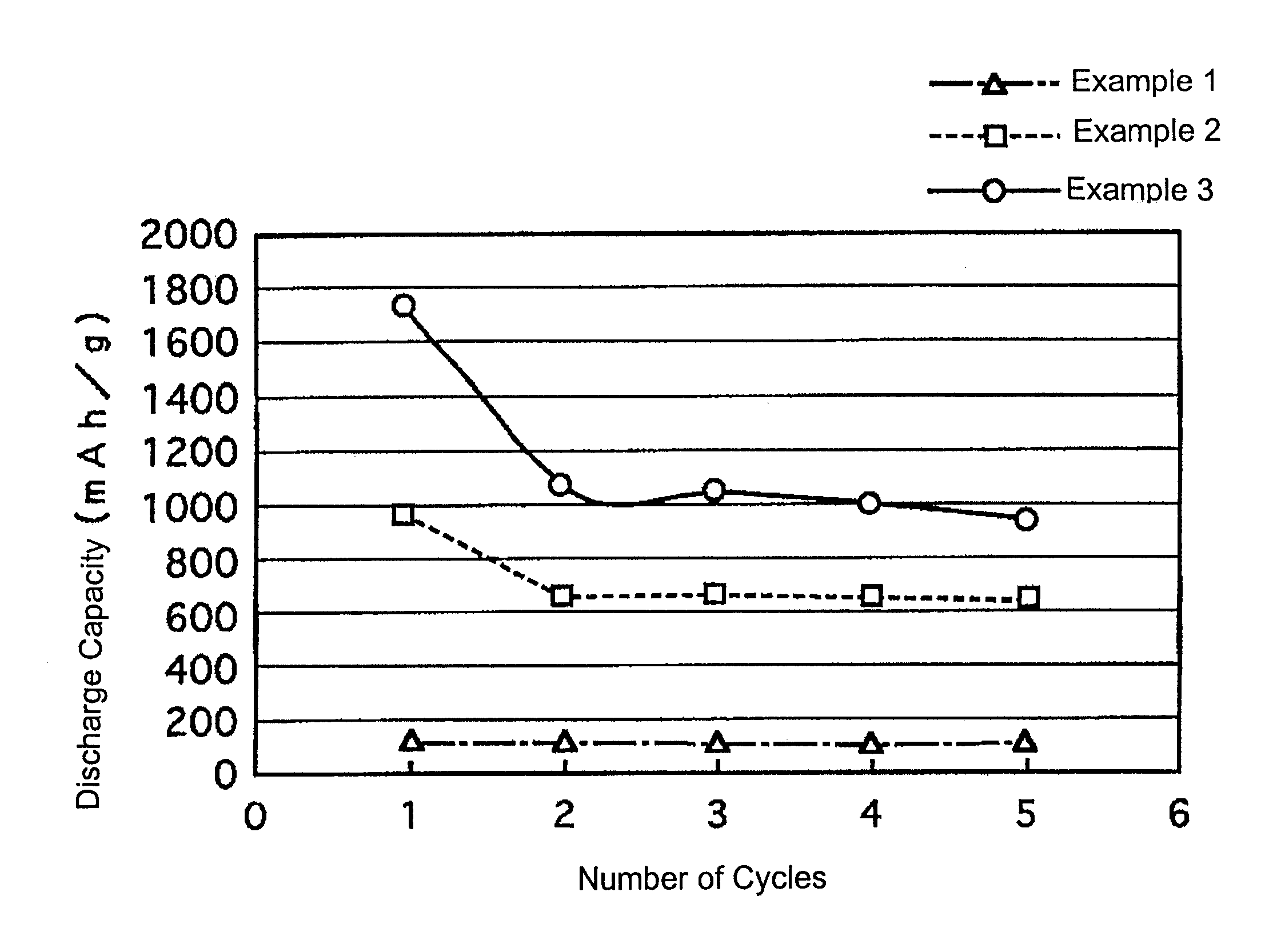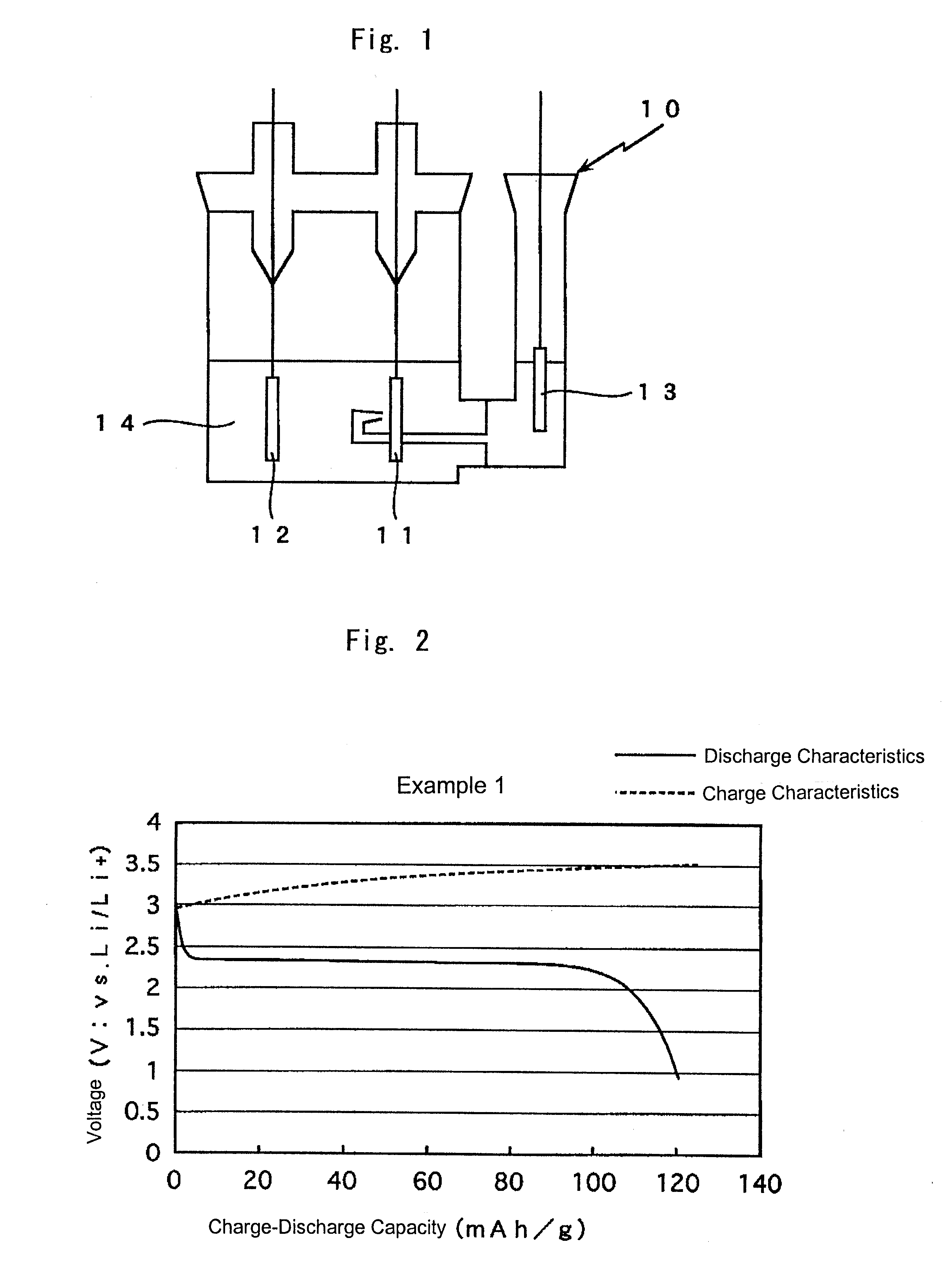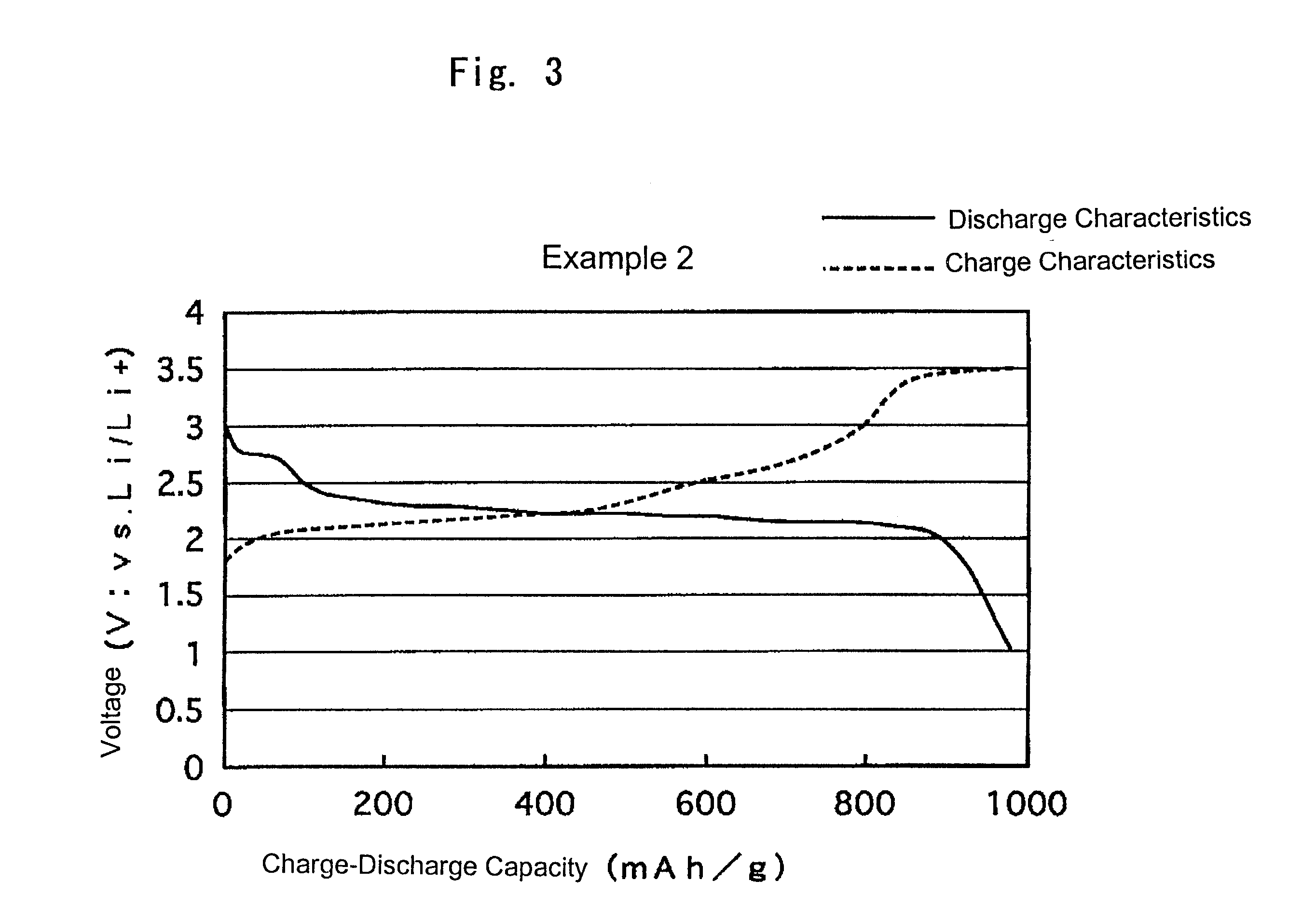Electrode active material and lithium secondary battery
a lithium secondary battery and active material technology, applied in the field of electrode active material and lithium secondary battery, can solve the problems of increasing cost, heavy battery weight, and insufficient capacity per weight, and achieve the effect of high energy density and light weigh
- Summary
- Abstract
- Description
- Claims
- Application Information
AI Technical Summary
Benefits of technology
Problems solved by technology
Method used
Image
Examples
example 1
In Example 1, active carbon having an average particle size of 16.1 .mu.m, specific surface area of 1056 m.sup.2 / g and minimum porous diameter of 1.5 nm (Kansai Thermochemistry, Inc.: AC-10) was used as a catalyst material.
The active carbon in an amount of 5 g and 1.67 cc of a solution of 0.6 g of polytetrafluoroethylene (PTFE) dispersed in 1 cc of water were mixed and ground for 30 minutes in a mortar to a solid, and was dried in a dryer at 60.degree. C. overnight to evaporate water. The dried material was crushed by a grinder for 5 minutes to make a powder. The powder was dried in a vacuum at 110.degree. C. for two hours to completely evaporate the water.
Then the powder was again crushed by the grinder for 5 minutes. After obtained powder of 0.2 g and sulfur of 0.2 g were mixed in a mortar for 30 minutes, the mixture was placed in a mold, and was pressed for five seconds at 150 kg / cm.sup.2 to form a disk having a diameter of 10.3 mm. The disk was wrapped by a stainless steel mesh...
example 2
In Example 2, the same active carbon as in Example 1 (Kansai Thermochemistry, Inc.: AC-10) was used as a catalyst material.
Sulfur in an amount of 0.006 g was dissolved in 1 cc of a solution of N-methyl-2-pyrrolidone (NMP) containing 0.01 g / cc of polyvinylidene fluoride (PVdF), 0.006 g of the active carbon was added thereto, and the mixture was stirred by a mixer for one hour to obtain a semisolid material to prepare an electrode.
The semisolid material was transferred to a glass container, dried at 60.degree. C. for two hours to evaporate NMP which was the solvent. The dried material was placed in a mold, and pressed at 150 kg / cm.sup.2 to form a disk having a diameter of 10.3 mm. The disk was wrapped by a stainless steel mesh to prepare an electrode in Example 2 which was a complex of sulfur and active carbon.
A ratio by weight of sulfur, active carbon and PVdF was 47.5:47.5:5.
example 3
In Example 3, active carbon fiber cloth having a specific surface area of 2500 m.sup.2 / g and minimum porous diameter of 2.0 nm (Kuraray, Inc.: Kuractive 2500) was used as a catalyst material.
Sulfur in an amount of 0.006 g was dissolved in 1 cc of NMP, the active carbon fiber cloth was dipped in the solution for one hour to allow the solution to penetrate into the active carbon fiber cloth. The active carbon fiber cloth was dried in a vacuum at 60.degree. C. for two hours to evaporate NMP to prepare an electrode in Example 3 which was an active carbon fiber cloth including sulfur.
A ratio by weight of sulfur and active carbon was 3:8.
PUM
| Property | Measurement | Unit |
|---|---|---|
| wt % | aaaaa | aaaaa |
| wt % | aaaaa | aaaaa |
| wt % | aaaaa | aaaaa |
Abstract
Description
Claims
Application Information
 Login to View More
Login to View More - R&D
- Intellectual Property
- Life Sciences
- Materials
- Tech Scout
- Unparalleled Data Quality
- Higher Quality Content
- 60% Fewer Hallucinations
Browse by: Latest US Patents, China's latest patents, Technical Efficacy Thesaurus, Application Domain, Technology Topic, Popular Technical Reports.
© 2025 PatSnap. All rights reserved.Legal|Privacy policy|Modern Slavery Act Transparency Statement|Sitemap|About US| Contact US: help@patsnap.com



